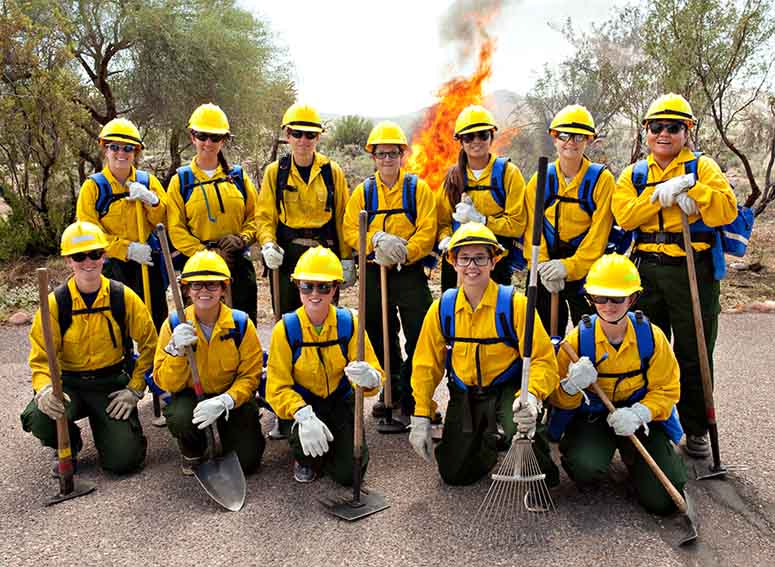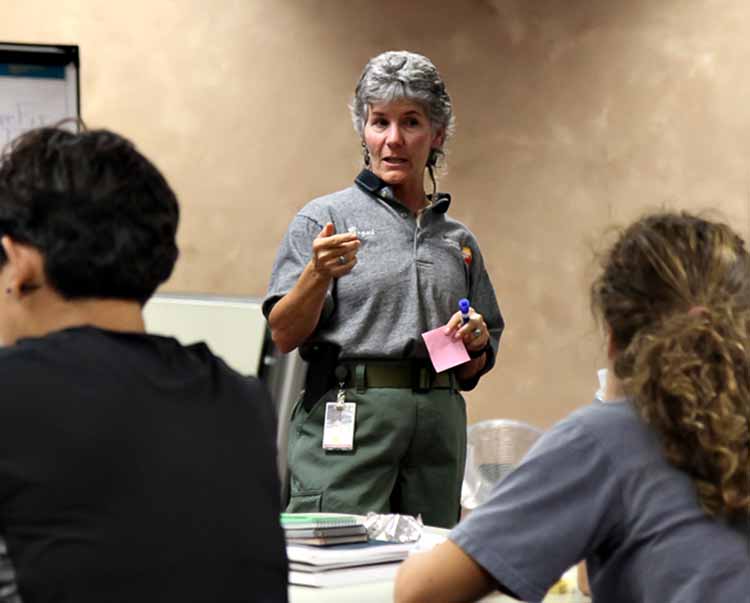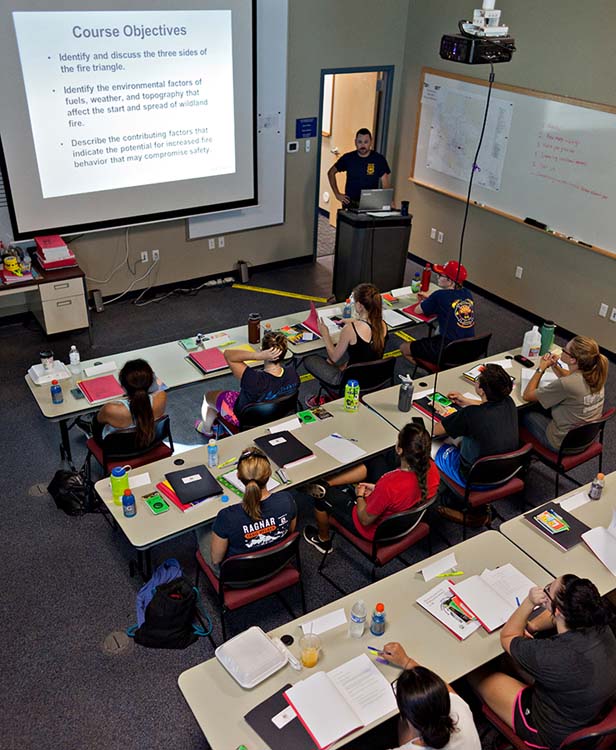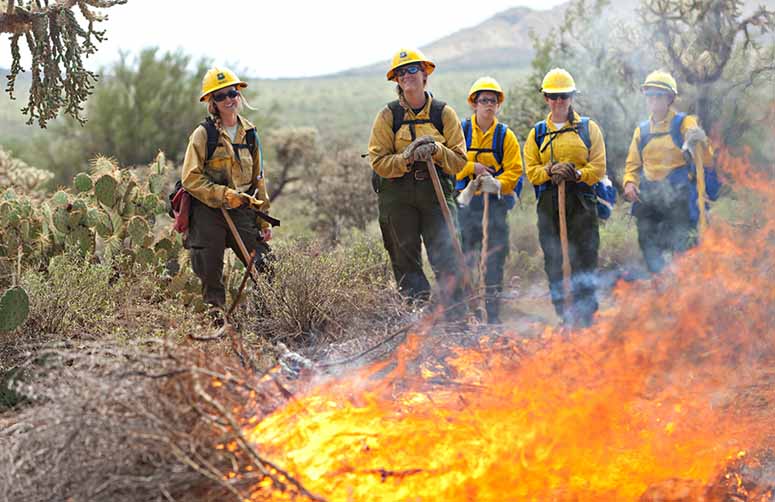Above: the USFS engine crew at Descanso, California in 1990. In the front row, L to R., Bequi Livingston, Maureen, Chris Anderson, Bill Gabbert.
Today I ran across an article that initially got my attention because it mentioned a firefighter I worked with who had an unusual name: Bequi Livingston. I worked with Bequi in 1990 on the U.S. Forest Service engine crew at Descanso, California. Already having a great deal of experience, she came to that position through the apprenticeship program, a way to get her permanent appointment, and it was obvious that she was destined for something greater.
The article below, reprinted with permission, was written by Zöe Rom for the December 20, 2017 edition of REI Co-op Journal.
Bequi Livingston is an old-school badass. She spent her career fighting fires alongside the most respected crews in the West. Today, she’s dedicated to training more women in backcountry firefighting.
She began working with the U.S. Forest Service in 1979 in New Mexico’s Smokey Bear Ranger District. After serving on the Young Adult Conservation Corps, she became a seasonal firefighter, eventually working her way up through fire engines, helitack crews, hotshot crews, fire prevention and fire lookout. Livingston went on to become an assistant fire management officer and later, a prescribed fire operations specialist. She was one of the first women to ever serve on the Sandia Helitack crew, and one of the first two women to ever serve on the prestigious Smokey Bear Hotshot Crew. In 2008, Livingston earned the Paul Gleason Award for her service in the wildland firefighting community.
After retiring, she started the Women In Wildland Fire Boot Camp in 2004, a program still running today in the USFS Southwestern Region (and modeled by other agencies throughout the West) to recruit and train women for success as backcountry firefighters.
She lives in Albuquerque with her husband, competes with the New Mexico Track Club and recently qualified for the National Senior Olympic Games.
Did you dream of being a backcountry firefighter when you were a little girl?
I was lucky to spend all my childhood summers at a remote family cabin in New Mexico where I learned to love nature and the woods. I loved to hike and fish and just spend time in nature. I was also an elite athlete and loved outdoor physical activities. When I was a senior in high school (in El Paso, Texas), I knew that I wanted to be a firefighter but only knew about the city structural firefighters and didn’t even know that wildland firefighters existed.
The vice principal at school would do everything to talk me out of it, saying you are too small, you’re a woman in a men’s profession and it’s too dangerous. He even lent me library books about catastrophic firefighting events. It only fueled my interest more. Then I went to college on an athletic scholarship, and my boyfriend worked as a wildland firefighter for the U.S. Forest Service. That’s the first I even knew about the job. That really sparked my interest because he loved it so much.
What is the job actually like? Can you describe a typical day (if such a thing exists)?
Although wildland firefighting has changed a lot, one typical day on a large fire with a crew would be like this: Wake up about 4am to get dressed and eat chow before attending briefing for the day’s assignment. Depending on the assignment that day for your crew, you will be transported (bus, van, helicopter or walking) to your division with specific instructions for your crew’s 12-hour shift. Duties vary according to the fire’s progression and objectives and, of course, safety. You are typically working with a variety of other fire crews and resources which are very specific and tactical in nature. Most often, you will take a short lunch break at some point and continue working, depending on the current situation as it continually changes. If all goes well during the work shift, you will typically leave the fireline in order to complete your shift by 6pm. Then, you head back to fire camp, eat dinner, shower if showers are available, have a little down time and bed down in your crew tents. But it all depends, and it can all change in the blink of an eye.
What’s it like being a woman in this male-dominated field?
Continue reading “A trailblazing firefighter provides training for women”






